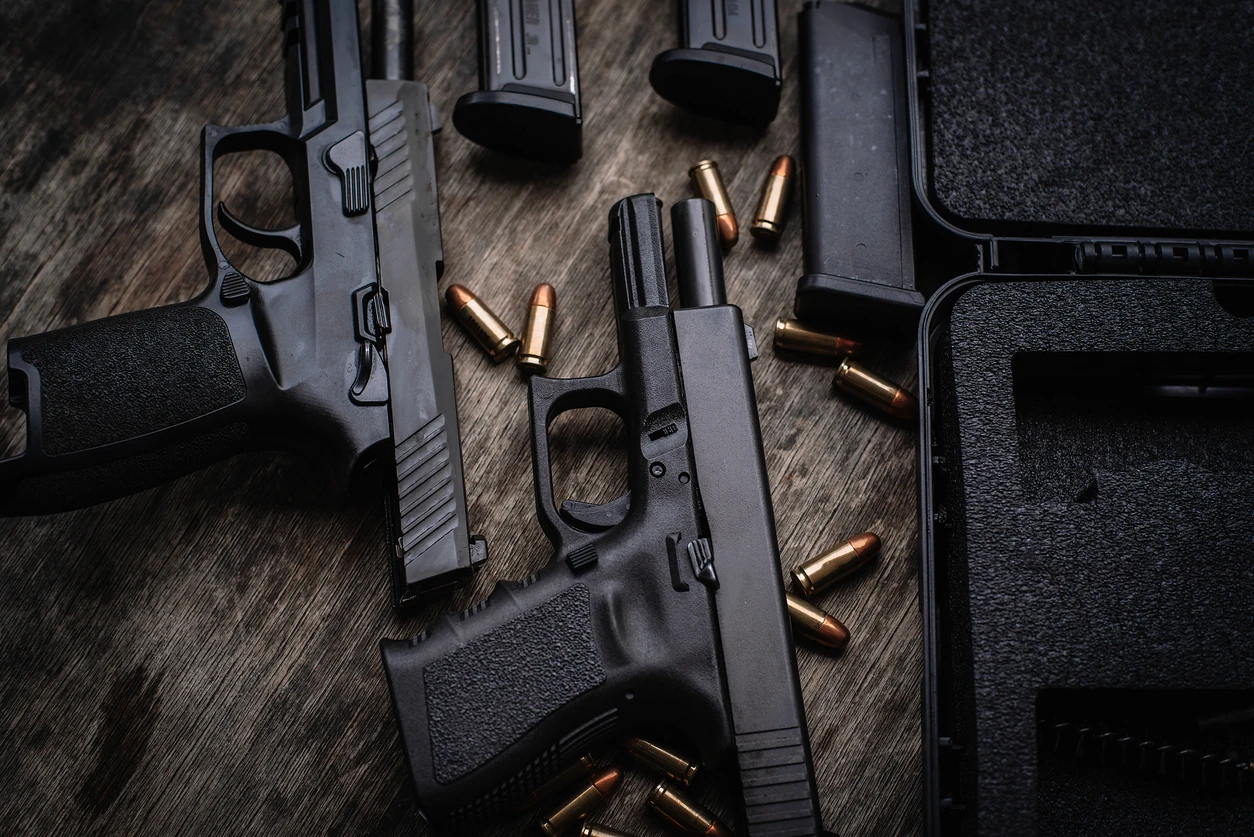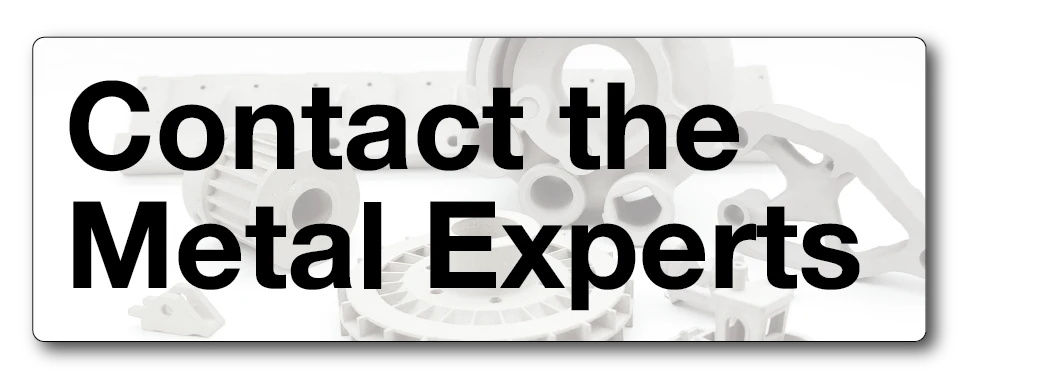The Beginner's Guide to All Things Metal Injection Molding
In this guide, we’ll discuss the ins and outs of metal injection molding, its advantages, design considerations, and applications.
What is Metal Injection Molding?
Metal injection molding is a manufacturing process used to create intricate, precise parts. It combines the design flexibility of working with plastic, with the strength of metal itself.
|
1. Creating the Feedstock The first step of any powder metallurgy process is to create a fine metal powder. Typically, this is done by crushing or grinding the metal. Once this step is complete, the metal powder is combined with a binder to create the feedstock. |
2. Injecting the Feedstock into the Mold Now that the feedstock is created, it’s injected into the mold under high pressure to create the shape of the component. After this step, the feedstock is known as the green part. |
|
3. Removing the Binders Debinding is a necessary step in the metal injection molding process to ensure the part is prepared for sintering. You can choose to use solvent debinding or thermal debinding. Solvent debinding is when you put chemicals on the part to dissolve the binder. On the other hand, thermal debinding uses a low-temperature oven to heat the feedstock until the binder evaporates. |
4. Sintering In the final step, the part is sent into a high-temperature furnace to reach a temperature just under the melting point. This step will remove the remaining binder and fuse the particles together. |
The Advantages of Metal Injection Molding
Understanding the pros and cons of the injection molding process is vital when deciding if MIM is the best fit for your applications or processes.-
Metal injection molding offers five main benefits:
- Consistency in quality and component dimensions for created parts
- A reduction in waste products created
- The ability to create complex components with ease
- Excellent mechanical properties
- The ability to create parts using a variety of readily available materials
1. Consistency in Quality and Component Dimensions for Created Parts
Consistency is necessary if you’re looking to produce more than one part. Fortunately, the MIM process is highly repeatable so each component is exactly the same.
Metal injection molding is performed in a controlled environment, reducing the risk of any contamination or defects.
2. A Reduction in Waste Products Created
Finding ways to reduce waste in manufacturing is a common challenge. Metal injection molding is a precise process, so there’s no finishing required after sintering.
As a result of precise manufacturing, there’s very little scrap or excess material by the end of the process.
3. The Ability to Create Complex Components with Ease
Metal injection molding creates parts with intricate structures, thin walls, and complex designs.
Keep in mind, if the wall thickness isn’t uniform, the thin walls and intricate structures may not be structurally sound and could collapse.
4. Excellent Mechanical Properties
Since the metal injection molding process applies heat and pressure, the final parts have a high density and strength. This strength allows for excellent mechanical properties that MIM is known for.
5. The Ability to Create Parts Using a Variety of Readily Available Materials
With metal injection molding, there are many metal choices available. Creating alloys allows you to decide exactly what your part is made out of.
Typically, MIM materials are divided into four categories:
- Ferrous alloys
- Tungsten alloys
- Hard metals
- Special materials
1. Ferrous Alloys
- Contains iron as the main material
- Known for hardness, strength, ductility, and corrosion resistance
2. Tungsten Alloys
- Primarily contains tungsten
- Known for high density, high melting point, and strength (especially at elevated temperatures)
3. Hard Metals
- Composite materials made of hard carbide particles
- Known for extreme hardness, wear resistance, and thermal stability
4. Special Materials
- Consist of particulate composites, titanium alloys, nickel-based alloys, and several others
- Mechanical properties differ depending on the material chosen
The Disadvantages of the MIM Process
Whether it's the latest and greatest manufacturing method or a tried and true process, there are always downsides. In metal injection molding, there are three disadvantages to keep in mind.
- Initial investment when first implementing MIM
- Lead times for creating new tools
- Costs for changing design during production
1. Initial Investment When First Implementing MIM
When first starting in metal injection molding, certain equipment must be purchased first – the injection molding machine, debinding oven, and sintering furnace. Each piece of equipment is relatively expensive, especially if you’re looking to purchase all at once.
If you’re looking to incorporate metal injection molding into your processes but still want to keep costs low, consider working with a manufacturer who already has this equipment.
2. Lead Times for Creating New Tools
To manufacture a new mold and design, the lead time can be weeks or even months, especially when working with complex designs. In a manufacturing environment, it’s essential to avoid production delays as much as possible.
3. Costs for Changing Design During Production
Mold and design changes not only increase lead times but also raise costs. Long lead times could lead to a production delay and increased labor costs if you need to meet deadlines.
Design Considerations for Metal Injection Molding Parts
While there are advantages to using metal injection molding, there are several design factors to take into consideration.
In this post, we’ll discuss the main two factors to consider before you start the metal injection molding process – the drag & sag effect and the final part design.
The drag effect refers to the shrinkage during sintering when the part size is decreased by 20%. The sag effect refers to parts sagging and unsupported during sintering. If you don’t consider these in the design and make the part larger than needed or add support structures, your part will not be stable enough.
While the sag and drag effect affects the functionality of the part, the actual design considerations make sure the final part is aesthetically pleasing. When planning the final part design, you’ll want to consider parting lines and witness marks.
Parting lines appear when you place two halves of a mold together. Although typically they can’t be avoided, you can try to minimize them by designing the mold to have continuous surfaces.
Witness marks are left from removing ejector pins, gates, or any other support structure. Unfortunately, sometimes these aren’t avoidable. However, if you design with these marks in mind, you can place them on the bottom of your component or in hidden spots.



Automotive
In the automotive industry, metal injection molding drives efficiency and produces engine components and transmission systems. The complex, yet precise components created by MIM are highly sought after in this industry.
Medical
In the medical field, MIM is advancing tools and surgical instruments due to its ability to produce durable yet intricate parts.
Firearms
Since MIM offers precise, durable components, the firearm industry uses the process to build triggers, levers, and several other intricate parts.

 In a hurry but still want to read?
In a hurry but still want to read? 

